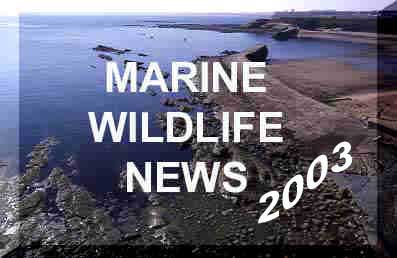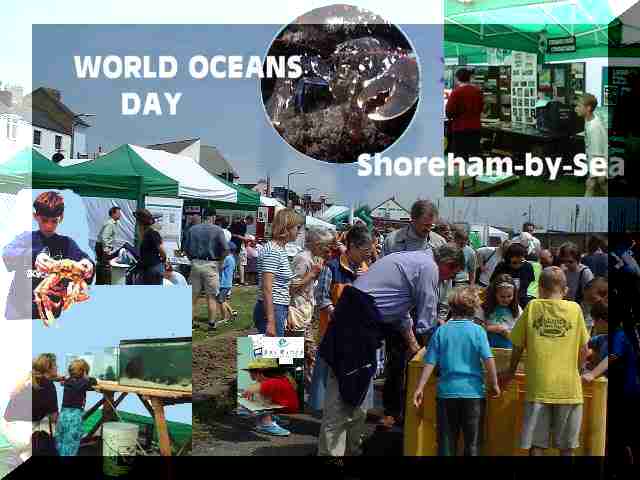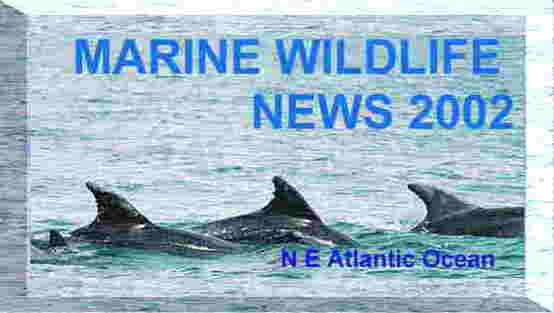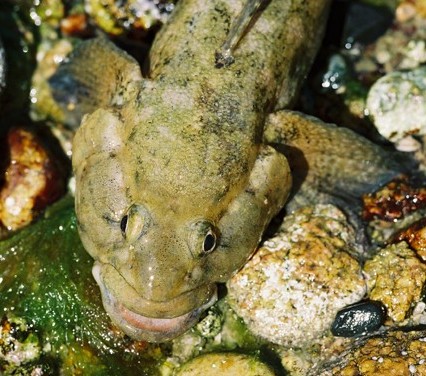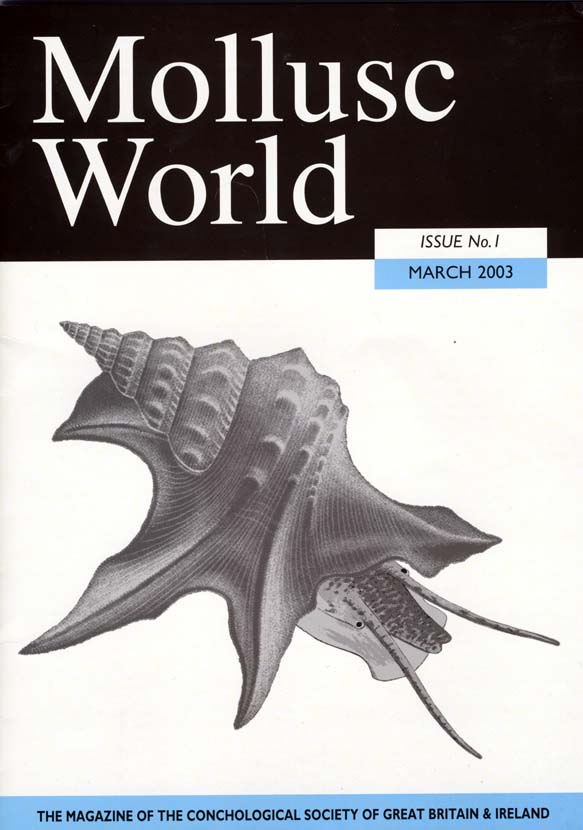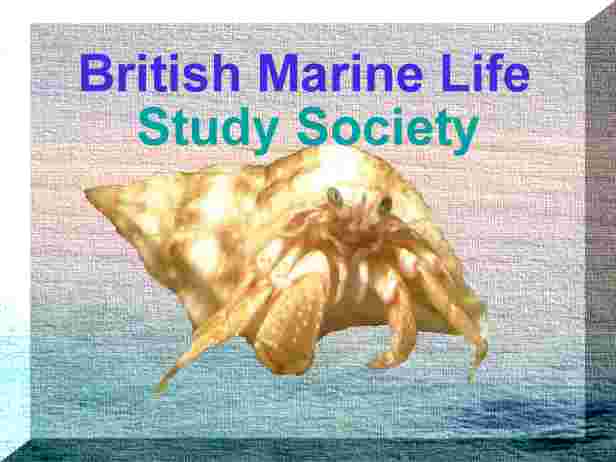 |
 |

|
The bulletin is designed for Microsoft Explorer 4 and above using medium fonts at a resolution of 800 x 600. Subscribe and unsubscribe options are at the foot of this page. |
|
|
| MARINE
LIFE NEWS
Reports
of marine wildlife from all around the British Isles, with pollution incidents
and conservation initiatives as they affect the flora and fauna of the
NE Atlantic Ocean.
21
April 2003
Report
by Nicolas Jouault on the Channel
Islands Wildlife Watch Smart Group
and on the Marine Wildlife of the North-east Atlantic Ocean Group  15
April 2003 15
April 2003
The Strawberry Beadlet Anemone, Actinia fragacea, has been observed discharging eggs in an aquarium. This method of reproduction has been suspected but there have been no observations in print before. Full Report Link Report
by Mike Guye via the Wet
Thumb Smart Group
5 April
2003
Report
by Graeme
Cresswell via UK
Cetnet
Confirmation by Elaine & Richard Francis (Sea Watch Foundation Recorders for Norfolk) Sperm Whale (Previous Report 2003) Sea Watch Foundation 4 April 2003 The second Sperm Whale, Physeter macrocephalus, of the year is washed up dead on Breasts Sands (a remote sandbank next to Terrington Marsh) on the southern coast of the Wash, East Anglia, to the west of King's Lynn. Newspaper Report BMLSS Cetacea |
| WORLD
OCEANS DAY
World
Oceans Day was first declared as 8th June at the Earth Summit in Rio de
Janeiro in 1992.
Are you running an event this year? If you are running a World Oceans Day event this year, please send me details so the information can be out on the World Oceans Day web page. Ideally you will construct your web page for your event, so all I will do is put in an Internet link. If
you do not have any web space, you can still design a web page and it can
be uploaded on space provided on the Smart Groups World
Oceans Day eforum.
Adur World Oceans
Day 2003
Adur Exhibition Adur will be one of the leaders in the United Kingdom when it presents an exhibition celebrating the official World Oceans Day. The event will take place on Saturday 31 May 2003 in Shoreham-by-Sea, on Coronation Green at the start of the Adur Festival.
|
| PICTURE
GALLERY
Each month, at least one special marine image will be published from images sent to the BMLSS. This can be of the seashore, undersea world or any aspect of the marine natural world, especially the underwater life, but not restricted to life beneath the waves. Topical inclusions may be included instead of the most meritorious, and images will be limited to the NE Atlantic Ocean and adjoining seas, marine and seashore species and land and seascapes. -------------------------------------------------------------------------------------
Poached Egg Shell (Photograph by Jim Anderson) To go back to the Dead
Men's Fingers: if you notice a colony with a group of round brown spots
on the side of one lobe, you are looking at the egg capsules of the Poached
Egg Shell, Simnia patula, a curious snail that feeds on soft corals
and sea fans, particularly Dead Men's Fingers. It doesn't look like
a poached egg to me; it is pointed at both ends, and like the cowries (which
are close relatives) it has a slit aperture running the whole length
of the shell through which the animal protrudes part of its body when it
feeds or moves around. The shell is white or yellow-white, so it
does not show up against the white or yellow body of the Dead Men's Fingers;
but its egg capsules - which are white when they are laid but later become
dark brown - and the chewed patches where it has been feeding are clearly
visible, and if you look, you may spot the adult Simnia. It is another
western species, which you are likely to see around Devon and Cornwall
or Pembrokeshire.
Images
The green blobs are the egg case of a worm
The
brown blobs are the egg cases of a worm
----------------------------------------------------------------------------------- The name of the particular coast should be included and the grid reference, if known. Print photographs can be included in Exhibitions and on the BMLSS Web Sites and electronic publications. Electronic images in *.JPG format can also be considered for the web site. They should not exceed 150K in size. |
| DIARY
In
chronological order, the most recent events are at the top of the page.
Events open to the public, free or for a nominal charge only are included.
Most Seminars need to be booked in advance.
BIOSIS
Conference Calendar for Zoology
Plymouth
6 May
2003
All
talks are on Tuesdays and start at 7:00 p.m.
Please
reserve your place by calling the Aquarium on 01752 275204
----------------------------------------------------------------------------------------------------------------------------
Unless otherwise stated, seminars are held on Fridays at 4:15 pm---------------------------------------------------------------------------------------------------------------------------- ---------------------------------------------------------------------------------------------------------------------------- |
NEW
PUBLICATIONS & WEB PAGES
|
SOCIETY
INFORMATION
The British Marine Life Study Society are responsible for producing the journal GLAUCUS, which is the first publication exploring the marine life of the seas surrounding the British Isles available to the general public.
the TORPEDO Electronic News Bulletin. The Glaucus 2002 CD-ROM was sent out to Premier BMLSS members in January 2003.
Messages to the first address will not receive any guarantee of a reply and from year 2003, the old EMail address is expected to fall into disuse. ---------------------------------------------------------------------------------------------------------------------------- Membership 2003 Current
members will
have their subscriptions waived for year 2003. An explanation was sent
before Christmas. This is because of he computer breakdown and the failure
of the full complement of paper publications.
|
|
If
you receive this Bulletin direct from the British Marine Life Study Society
it will contain only hypertext and image (*.htm *.gif & *.jpg) files.
|
|
These
pages are not designed for the default settings on the Page Set-ups of
your browser. I recommend viewing in Microscope Internet Explorer 6 and
altering the right and left hand columns in the Page Set-up menu to 9 mm
(from 19 mm).
Some of the images may not display if you have changed your directory for downloaded files. The images may also not display properly if your settings on your EMail software do not allow you do this automatically. When received in Pegasus the format is changed slightly, but the bulletin is still readable. Torpedo compiled by Andy Horton Background design by Nicolas Jouault , Steve Trewhella and other contributors 28 April 2003 |
Compiled on Netscape Composer 4.7 and other programs

